Saturday, February 9, 2019
The Ruins of Copan
At 5:00 a.m., roosters became my new least favorite bird. I expect this to be the case for the next two weeks. For the record, my usual least favorite bird is any bird that gets in my tomato plants.
There's a lovely terrace at the Hotel Cuna Maya where breakfast is served. The temperature is perfect this morning, with a nice breeze. I expect it will be fairly hot later, but that's why we like to travel south in the winter. The comida tipica is scrambled eggs, refried black beans, a slab of flavorless white cheese, a giant hunk of avocado, and fried banana. The coffee was rich and wonderful.
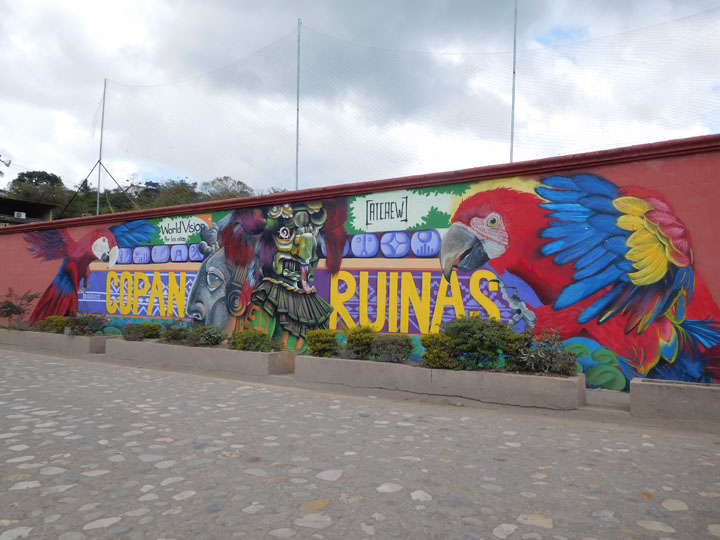
Nice signage
The Mayan ruins of Copan, our reason for visiting the area, are within easy walking distance of Copan Ruinas. That's right – the town is called “Copan Ruinas,” while the ruins are simply “Copan.” Go figure. Anyway, we arrived at the ruins at 10:45 and purchased tickets for the ruins only for $15 ea. Entrance to the tunnels costs an additional $15 and the museum another $7.
Upon entering the site, we spotted several scarlet macaws, the national bird of Honduras. The macaws, most former pets, are released here from a nearby bird sanctuary, Macaw Mountain Bird Park, once they're ready for reintroduction into the wild. We also saw a big rodent called an agouti and some huge wild turkeys.

Majestic macaws, a symbol of Honduras
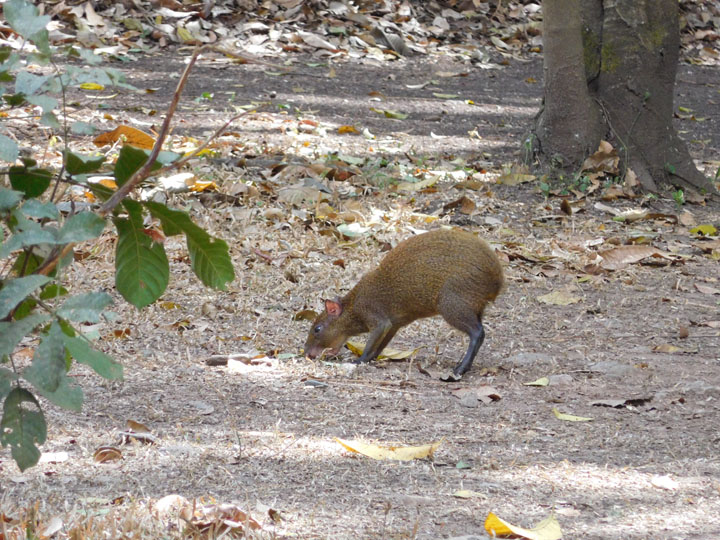
Agouti

Bird fight!
Copan is not as large as some ruined Mayan cities we've seen, but it was one of the most important cities of the Mayan civilization. The most southerly of the major Mayan sites, at its height, the kingdom of Copan had a population of over 20,000 people.
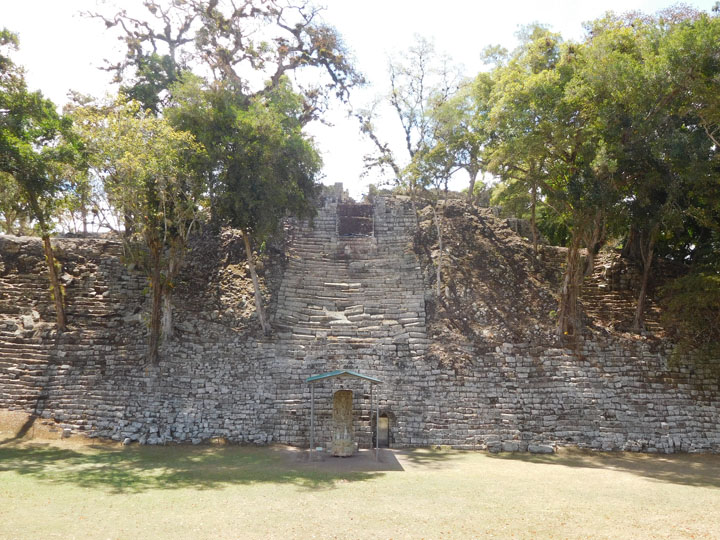
Temple of the Inscriptions
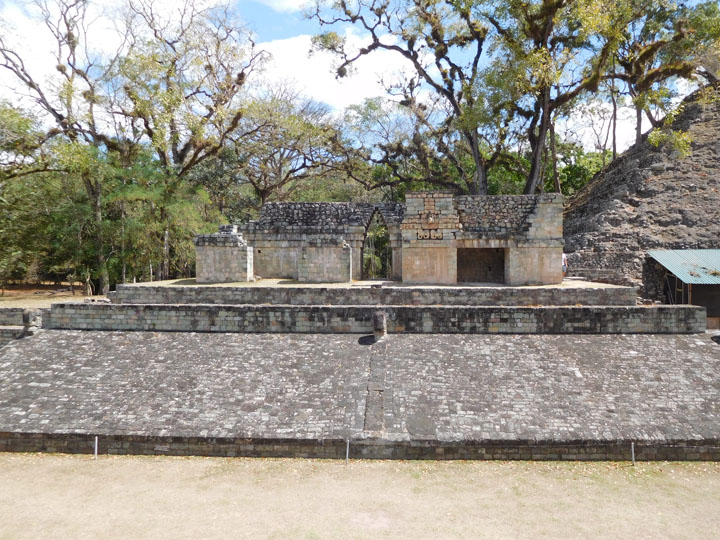
Ball court

Big foot

Structure 9
There are all the temples, plazas, and ball courts here you expect to see in a former Mayan city, but Copan is best known for the intricacy of the carvings on its many stelae, altars, and sculptures. The sculptures onsite that have coverings over them are original, while the uncovered ones are reproductions, the originals having been moved to museums.

Stela of King Eighteen Rabbit

Jungle boogie

Big Head Todd
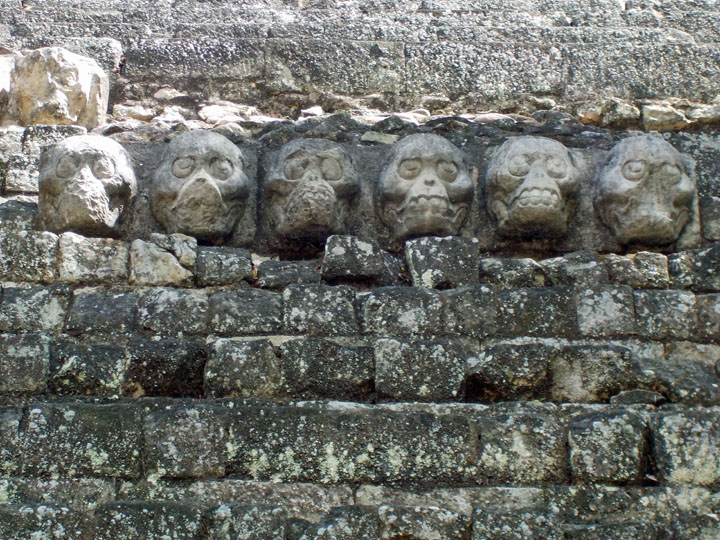
Temple of Doom

Is this awesome or what?
The Hieroglyphic Stairway is the most famous of all the Copan monuments. It takes up the entire side of one of the temples and consists of 63 stone steps, made up of 2,200 hieroglyphic blocks, recording the history of the city. Regrettably, early archeologists tried to reconstruct the scattered blocks, badly, leaving the recorded history a jumble.
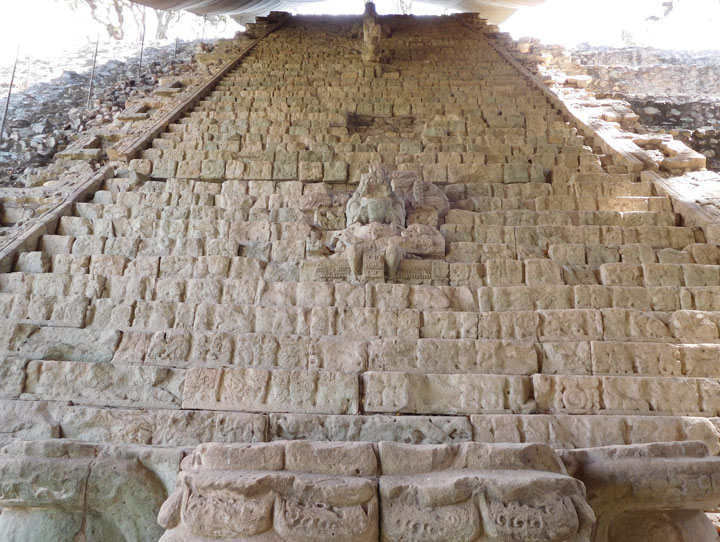
Hieroglyphic Stairway
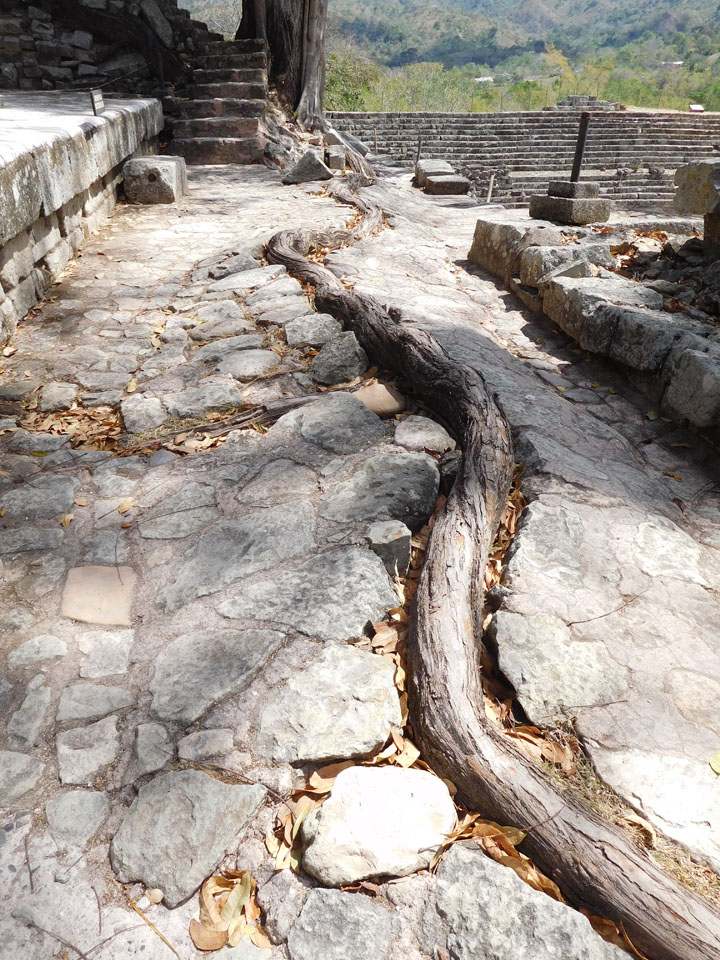
Nature takes its course

Back side of the Temple of the Inscriptions
The ruins are beautifully situated among rolling green hills alongside the Copan River. After exploring the site proper, we then walked a nature trail through a forest to the river. The nature trail exited behind the museum, and the back door was open, so we got to see the replica of the Rosalia Temple without paying to go through the museum.

Funky tree
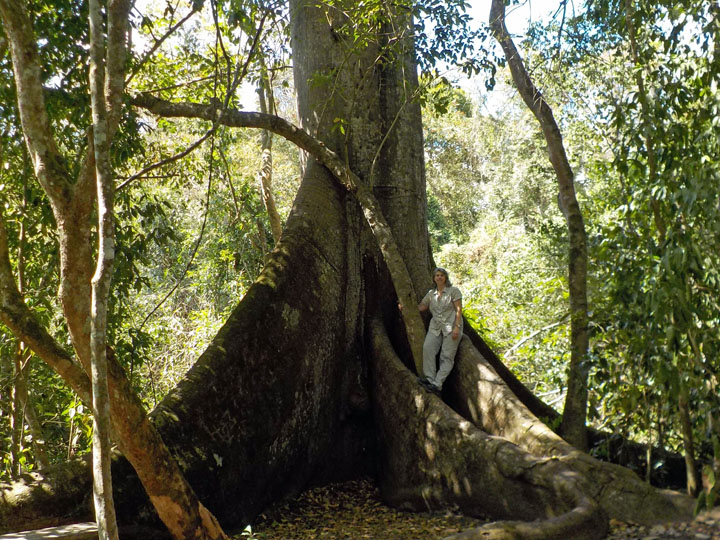
Jana at the base of a ceiba tree

Copan River
Ate lunch at the cafeteria outside the site entrance, bean and beef burritos and bottles of water, reasonably priced. The burritos were substantial and quite good. By the way, BYO water into the ruins, because there's none for sale once you enter the site.
Entrance to Las Sepulturas, 2 km from the main ruins site, is included on the same ticket, so after lunch we took a tuk-tuk over and arranged with the driver to pick us up in an hour. A tuk-tuk is a little open-air three-wheeled taxi with a two-cycle engine, and a ride in one is kind of exciting. I felt like we were on The Amazing Race!
The name “Las Sepulturas” (The Graves) comes from the fact that the residents here buried their dead in the same structures in which they lived. For these ruins we had a guided tour. Since it was in Spanish, we missed a lot, but we got much more information this way than with no tour at all.

Jana and guide at Las Sepulturas
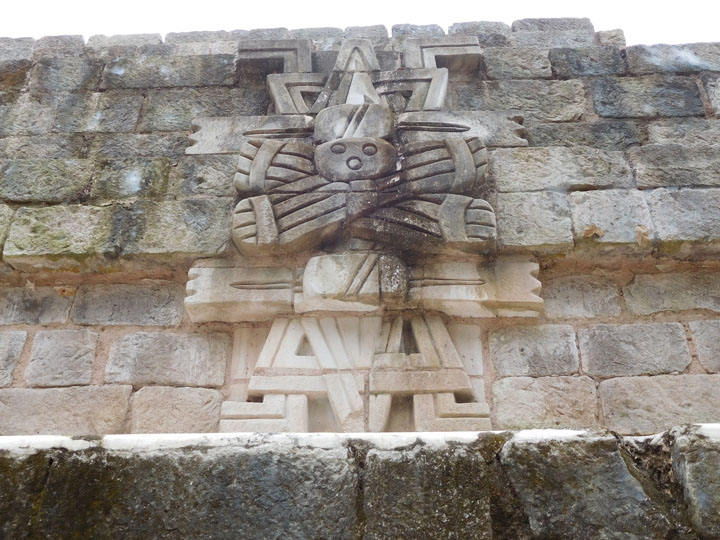
It's a bee
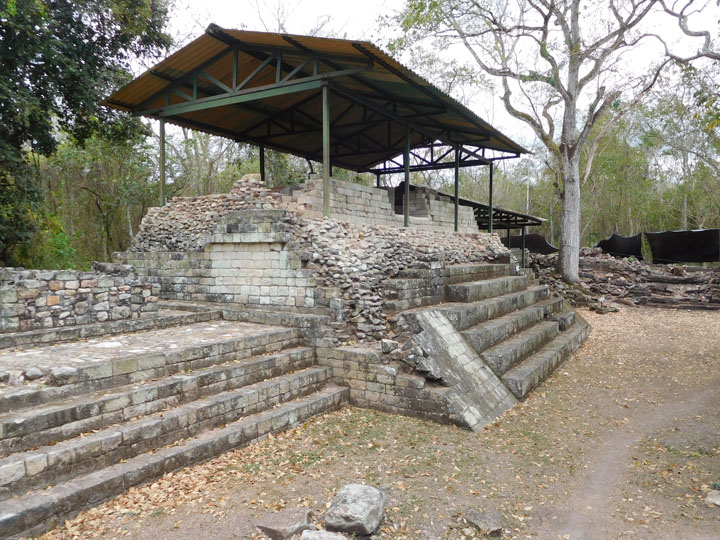
Housing for the upper middle class
The main ruins site is where the royal family lived, while Las Sepulturas was the residential area for the mere nobility, the astrologers, shamans, doctors, scribes and such. As a scribe myself, I found it quite interesting. The poor lived in the mountains, and their homes were made of wood and straw and thus have been completely destroyed by time and nature.
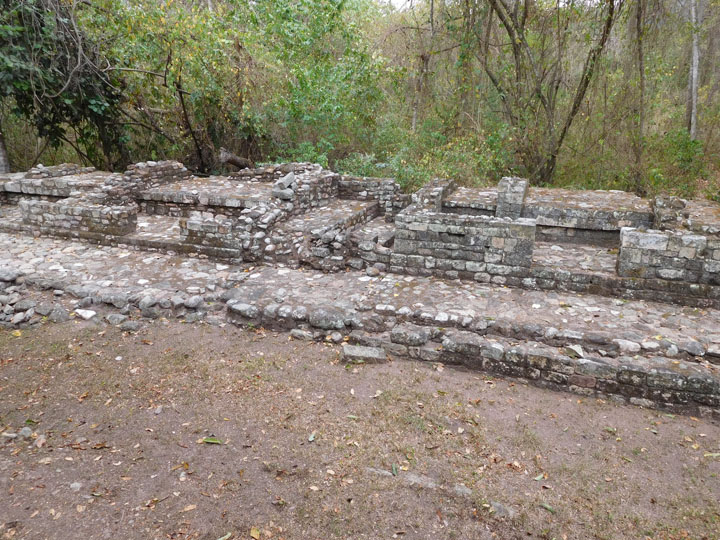
Minor ruins
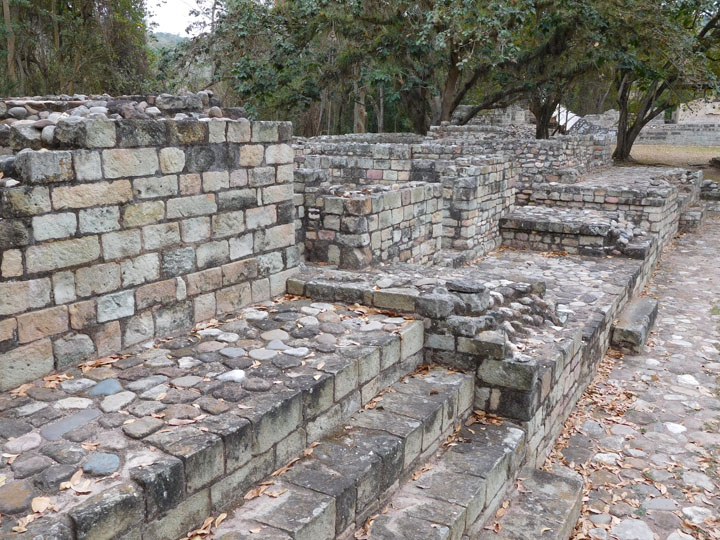
Ancient condos
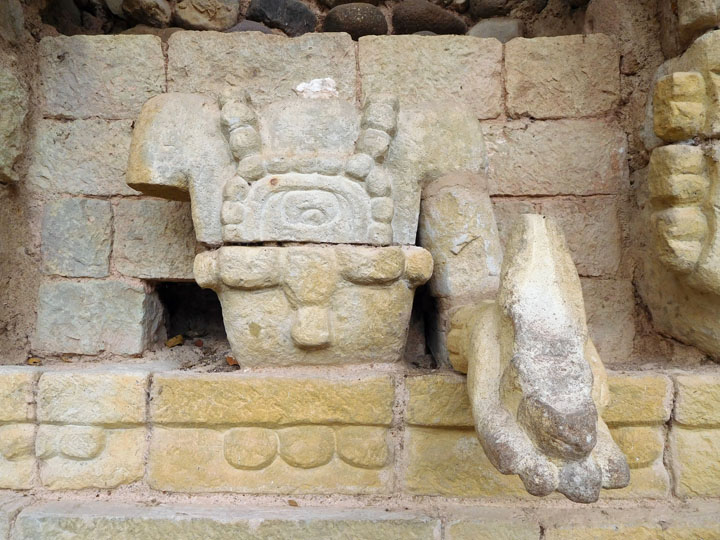
Ink pot in the hand of a scribe
Our tuk-tuk driver returned at the appointed time and took us to Parque Central for 40L each. We'd already walked a lot today, so it was definitely worthwhile to get a ride the 2 miles or so back to town for about $1.60 per person.
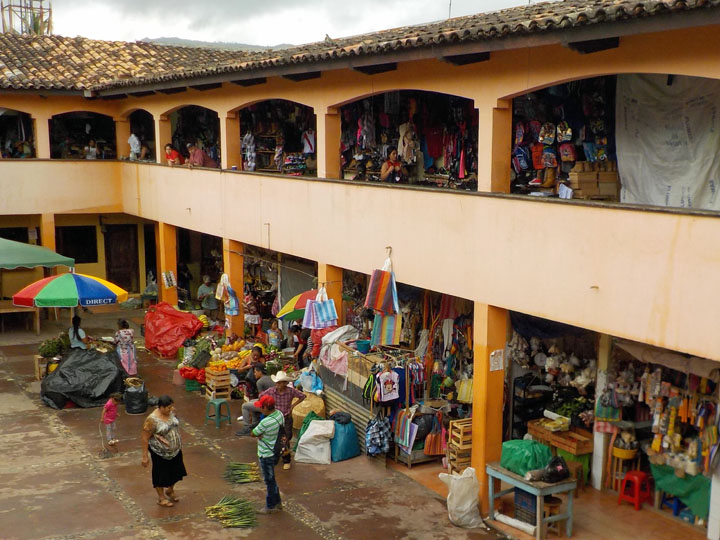
Small market near our hotel
In the evening we went to dinner at Vamos a Ver. For cerveza we had SalvaVida, the local watery pilsner that we are apparently doomed to drink until we leave Honduras, and we ordered two variations of bistek dinners for our meals. The marinade on the steak was great, and the restaurant had a nice laid-back vibe.
After dinner we sat around at the park for a while, checked out the inside of the cute little church, then went back to the hotel. We've been enjoying Copan so much we decided to stay an extra night. Booking directly with the hotel rather than through Booking.com, the room was only $25 instead of $27. Enelda also made us reservations for a canopy tour tomorrow and a shuttle to Antigua the following day.
Tom
Goetz's Homepage
|

























